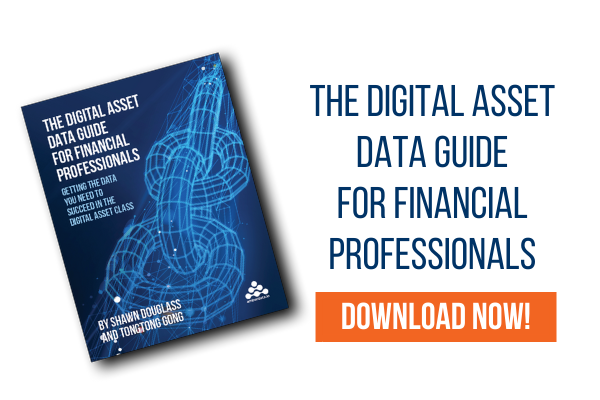Goldman Sachs and Galaxy Digital Bring OTC Derivatives to Crypto

In March, Goldman Sachs conducted the first over-the-counter crypto option trade by a major bank, marking a milestone in the adoption of digital assets by financial institutions. The trade involved a non-deliverable Bitcoin option and was facilitated by Galaxy Digital, the firm founded by famed crypto bull (and Goldman Sachs alum) Michael Novogratz. Options like this settle in cash rather than the underlying security, which means that no Bitcoin changes hands. This type of derivatives contract is used in foreign exchange trading, where the underlying currency is illiquid or not easily converted, such as the Chinese Yuan.
While the crypto derivatives market isn’t new—and neither is Goldman Sachs’ engagement in the digital asset space—this OTC trade is yet another signal to the financial services industry that crypto is no longer a fringe zone and is likely to lead to other institutions engaging in similar activities. Goldman Sachs itself is already planning to expand its OTC crypto derivatives trading to include Ethereum.
What is the significance of OTC derivatives for crypto?
Institutions like OTC crypto derivatives because these contracts can be tailored to the needs of each party involved in the trade. As they are private transactions and are not listed on exchanges, OTC derivatives are subject to minimal regulations and involve few, if any, intermediaries. Additionally, they tend to be much larger than exchange-based transactions.
The use of derivatives and other proxies like ETFs allows institutions to trade crypto without having to touch actual coins. This way, their trading activity never shows up on-chain and remains private.
What are the risks of OTC derivatives?
While OTC derivatives create significant opportunities for institutions, providing a tool that can be used for hedging, speculation, and leverage, there can also be significant risks. OTC derivatives were one of the major forces behind the 2007-2008 financial crisis, as the market value of derivatives tied to mortgage-backed securities collapsed along with the housing market.
While crypto is a long way away from the scale of the U.S. housing market (the total value of which is estimated to be $43.4 trillion) and the potential risks involved are much smaller and easier to manage, the asset class is no stranger to volatility and large valuation swings. This potential volatility means that any institution engaging in OTC crypto derivatives trading needs to closely track its exposure and the valuations of the underlying crypto assets to minimize the risk of significant losses.
Using data for risk management
To successfully trade crypto derivatives, especially at the institutional level, it is important to have accurate digital asset data to determine valuation, exposure, and risk properly, as well as to track performance. Data from the blockchain and major crypto exchanges are needed to create a complete picture of a coin’s behavior. Without comprehensive data, models can be incomplete and inaccurate, resulting in derivatives contracts that are riskier than desired and leave an institution open to excessive losses.
We created the Amberdata platform with institutional client uses in mind, providing data for over 100 centralized and decentralized crypto exchanges and all major blockchains with 24/7/365 reliability. With Amberdata, you get comprehensive data and insights into blockchain networks, crypto markets, and decentralized finance, empowering you with real-time, historical, fundamental & market data for research, trading, risk, analytics, reporting, and compliance. And since you won’t have to build your own data infrastructure, you’ll be able to begin offering digital asset products faster. Request a demo today to learn how the Amberdata platform can power your institution’s digital asset plans.
Amberdata
Amberdata is the leading provider of global financial infrastructure for digital assets. Our institutional-grade solutions deliver data, analytics and comprehensive tools and insights that empower financial institutions to research, trade, and manage risk and compliance in digital assets. Amberdata serves as a...
